MARKET OVERVIEW
The global herbal medicine market are an emerging trend that will define the way societies of the world will approach healthcare and wellness in the next few years. The market will not be confined to any particular region or cultural tradition but will be a shared movement towards relearning the worth of plants and natural resources as means of sustaining health. In the coming years, the market will further establish its identity by combining centuries-old practices with contemporary production methods, thus guaranteeing that traditional healing knowledge will be retained while conforming to global quality standards. The global herbal medicine market will do much more than provide products; it will create an ecosystem where wellness, sustainability, and scientific validation converge.
Defining this market will involve not only viewing it as a group of herbal products, but as an industry that will open up new avenues for research, agriculture, manufacture, and distribution. It will consist of herbs that will be grown under stringent quality control, processed in buildings that will comply with international standards, and sold to consumers who will look actively for truth and authenticity. The industry will serve as a nexus for ancient traditions like Ayurveda, Traditional Chinese Medicine, and Western herbal research, providing a platform where different traditions will exist and interact with one another. The interaction will bring in the lesser-known herbals into the limelight and will allow them to become well-known globally.
In the future years, this industry will also create new standards for the way natural products will be consumed. The old-style decoctions and powder preparation will be replaced by new formats like capsules, tablets, and liquid extracts that will fit the modern lifestyle better. Technology will take center stage, enabling the traceability of herbs from farm to store, and consumers will insist on knowing where their products will be sourced from and how they will be processed. Transparency will build a stronger connection between consumers and producers, building trust and loyalty in a world where authenticity will be paramount.
Apart from health benefits, the global herbal medicine market will influence agricultural and trade patterns. Farmers will cultivate medicinal herbs in a way that will maintain biodiversity, and global supply chains will be established for constant availability. Research institutions will study bioactive compounds in herbs, and results will determine product formulation and promotion. Education will then be in the picture, as people will become educated in new ways of using herbal remedies in preventive care and wellness regimens.
In effect, the Global Herbal Medicine industry will not be stagnant but will be a progressive industry that will marry tradition and technology to define the future of healthcare. It will be more than an alternative to drugs and will be a global cultural and economic force that will increasingly find its role in daily life.
Global herbal medicine market is estimated to reach $434,708.38 Million by 2032; growing at a CAGR of 21.8% from 2025 to 2032.
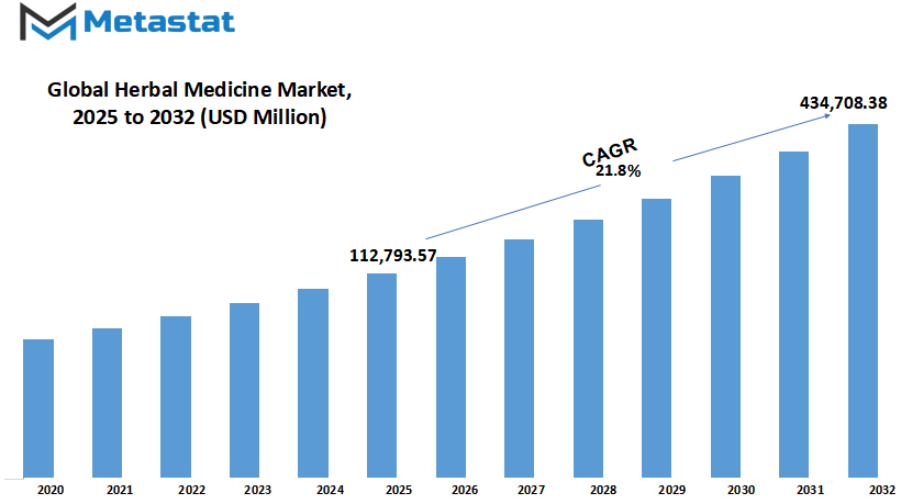
GROWTH FACTORS
The global herbal medicine market will continue to trend because more people will turn to natural and organic options than synthetic ones. This will result from increased sensitivity to wellness and a want for healthier, plant-based treatments for disease. The industry's future will include greater emphasis on incorporating herbal medicine into one's life, as consumers seek out products that will enhance immunity, alleviate stress, and promote long-term health. The global herbal medicine market will be stimulated by the growing number of chronic diseases, which will cause individuals to seek complementary therapies in addition to traditional medicine. This will create a setting where herbal medicine will not replace traditional treatments but will supplement them in the promotion of quality of life.
Still, the market will have challenges that will require special focus. There will still be lack of standardization and quality control that will impact consumer confidence since many will want evidence that what they are purchasing is safe and pure. Limited scientific validation and regulatory issues will also slow down quicker adoption. In the absence of clear global standards, certain products will still be under the microscope, and this will make healthcare professionals hesitant to recommend them. Companies operating in this sector will have to fund research and come up with systems that will ensure consistency in each batch of their product. When customers will find solid certifications and clear labeling, their faith in herbal medicine will increase.
In spite of all this doubt, the future is going to offer immense possibilities. Growing e-commerce will bring herbal products into the forefront globally, enabling even small manufacturers to access international customers. Online platforms will facilitate customers to gain knowledge about herbs, compare and order products from anywhere in the world. Global supply chains will become better, and this will guarantee a consistent supply and quicker delivery, aiding the market to grow even more. Educational campaigns and partnerships with medical professionals also will be involved, as they will promote awareness of the safe and efficient use of herbal medicine.
The coming years will witness the global herbal medicine market become a platform where science and tradition will blend to provide effective products. With improved regulation, quality control, and increased awareness, herbal medicine will be the choice of millions to make their lives healthier and harmonized around the world.
MARKET SEGMENTATION
By Product Type
Product type will also be among the strongest predictors of the way in which the global herbal medicine market will be organized. Herbal supplements will be a top contributor as they will become an everyday health habit for the majority. They will be utilized by consumers to address certain needs like boosting immunity, improving digestion, or stress relief. These supplements will be produced in forms that will be easy to integrate into an active lifestyle and therefore will be accessible to younger and older populations equally.
Herbal cosmetics will see a huge increase in demand because individuals will be seeking cleaner, safer, and greener alternatives to chemical-based skincare. All from face creams and serums to shampoos and soaps will feature, made up of ingredients such as aloe vera, neem, and turmeric. The attraction will be more than about beauty, as these cosmetics will guarantee long-term skin wellness, resonating with a wellness-driven strategy.
Other types such as herbal drinks, herbal medicines, and essential oils will increase their reach worldwide. Herbal drinks will have consumers who will desire functional effects like relaxation, detox, or energy. Herbal medicines will enjoy improved research-based backing, establishing them as medical professionals' go-to. Essential oils will increase in use as aromatherapy will grow more mainstream in promoting people's ability to naturally manage mental health, stress, and sleep.
By Form
The global herbal medicine market will be presented will also contribute to its uptake. The most dominant form will continue to be the capsules and tablets because of their ease of handling and exact dosage. Individuals will find them suitable because they will be convenient to consume, store, and carry, and thus be a favored choice among those with organized lifestyles.
Liquid extracts will increase in popularity because they will give quicker absorption and can be blended quickly with beverages. The form will be favored by individuals who will want quick outcome or by patients that are unable to swallow capsules. Powders will remain popular due to their usability because they will enable consumers to mix herbs in smoothies, tea, and even meals, providing a natural way to introduce nutrients into the diet.
Topical products such as creams and ointments will also experience greater use as they will provide localized relief for the skin or muscle pain. Other novel formats, including herbal patches, sprays, and gels, will appear to make the consumption even more convenient. These new formats will keep up with the speed of contemporary life, and consumers will be able to enjoy the benefits of herbal medicine more conveniently.
By Source
With regards to source, the global herbal medicine market will be focusing on traceability and transparency. Barks remain a precious source due to their naturally occurring compounds that will be utilized in supporting various therapies. They will be carefully harvested in a way that ensures sustainability and preserves biodiversity.
Leaves will continue to be one of the most widely sourced items in this market, providing antioxidants and essential nutrients. They will be treated with care to maintain their natural form, ready for use in teas, supplements, and on-skin applications. With consumers demanding more knowledge about what they are consuming, companies will seek to signify where these leaves will come from and how they will be processed.
Roots will be valued for their dense form and will continue to be at the heart of herbal medicine formulations. Spices like ginger, ashwagandha, and ginseng will continue to be sought after because of their medicinal value. Herbs like flowers, fruits, and seeds will gain greater popularity as research will reveal new applications, making the product variety even higher in the market. This range will maintain the global herbal medicine market competitive and accessible, offering something to everyone's health and well-being needs.
|
Forecast Period |
2025-2032 |
|
Market Size in 2025 |
$112,793.57 million |
|
Market Size by 2032 |
$434,708.38 Million |
|
Growth Rate from 2025 to 2032 |
21.8% |
|
Base Year |
2024 |
|
Regions Covered |
North America, Europe, Asia-Pacific Green, South America, Middle East & Africa |
REGIONAL ANALYSIS
The global herbal medicine market won't only increase in terms of size but form itself differently by geography, capturing the cultural practices, healthcare systems, and lifestyle orientations of individuals globally. Geography will still be an essential manner of seeing how herbal medicine will be utilized and which innovations will become mainstream. The market will be segregated into North America, Europe, Asia-Pacific, South America, and Middle East & Africa, with all of them contributing their proportion to the future consumption of herbal medicine.
North America
North America will be among the most dynamic geographies in the global herbal medicine market, led by the U.S., Canada, and Mexico. In the U.S., buyers will have demand focused on supplements and functional beverages supporting immunity, anti-stress, and energy. With wellness culture becoming more penetrating, herbal products will be readily visible in retail stores, pharmacies, and online sites, being most accessible.
Canada will be no different, with herbal medicine becoming a trusted adjunct to orthodox treatment. It will also emphasize research and clinical testing of herbal remedies, which will promote high trust among medical professionals. In Mexico, old knowledge and tradition passed down from a generation to the next will merge with modern technology and manufacturing, producing distinctive formulations that will command both local and international markets.
All three nations combined will lead the way in how regulation and innovation can go hand in hand to build a transparent and trustworthy herbal medicine industry. North America will lead demand for high-quality herbal products and lead manufacturers to have high standards, setting global expectations for the category.
Europe will be a solid market for herbal medicine, with consumption led by the UK, Germany, France, and Italy. In the UK, natural health interest will be consistent, with emphasis on herbal teas, oils, and nutritional supplements that will be consistent with preventive care. Germany will be synonymous with high-quality herbal products, since it will heavily invest in standardized production processes and pharmaceutical-grade herbal medicines.
France will witness herbal cosmetics being a core component of the beauty and personal care industry in France, attracting customers who will opt for botanical solutions as opposed to chemical-based ones. Italy will tie its historical value for natural products with focus on premium herbal beverages and diet supplements, incorporating herbal wellness into its way of life.
The Rest of Europe will follow suit, with the smaller markets gradually raising their consumption as awareness picks up. Europe's concentration on strict regulation will guarantee that herbal medicine will be safe, tested, and trusted, promoting steady growth in the coming years.
The Asia-Pacific region will be the most pivotal in determining the global herbal medicine market due to the strong affinity with traditional approaches such as Ayurveda, Traditional Chinese Medicine, and Kampo. India will be at the forefront through the confluence of ancient practices and mass production and exports of herbal medicines. Ayurvedic oils, powders, and herbal supplements will remain in high demand both globally and regionally.
China will lead in innovation, bridging conventional Chinese Medicine with cutting-edge technology and clinical research. This will make herbal remedies popular in both the domestic and foreign markets. Japan and South Korea will make contributions through herbal cosmetics and functional foods, combining natural components and state-of-the-art research to produce popular products.
The Rest of Asia-Pacific will see its share increase from better access and awareness of herbal products through online shopping. Overall, this region will not only propel production but also global education around the significance of herbal medicine, making it a part of international wellness discussions.
South America shall become a distinctive and promising player in the global herbal medicine market. Brazil shall spearhead the region due to its high biodiversity, providing materials that shall be employed in herbal cosmetics, teas, and pharmaceutical formulation. Local herbal traditions shall promote new lines of products that will draw worldwide interest.
Argentina will be followed by a robust herbal drinks culture and teas, which will have broader markets as natural infusions gain popularity. Firms will examine how they can market conventional herbal information and make it accessible to global consumers.
The Rest of South America will become more involved by establishing cooperatives and ventures to produce and export medicinal plants in a sustainable manner. This area will contribute to making the variety of herbs consumed throughout the world greater, with new distinctive species that will not be readily found elsewhere.
The Middle East & Africa will be an interesting blend of tradition and opportunity. GCC nations will experience robust demand for herbal cosmetics and wellness products, driven by a desire for natural solutions and premium products. Egypt will also base its growth on the history of herbal medicine, growing herbs for local consumption as well as exports.
South Africa will be the pacesetter in innovation, developing and processing native herbs such as rooibos and Buchu for export to world markets. The products will position the country as a prime supplier of specialty herbal ingredients.
The Middle East & Africa will develop incrementally but consistently, led by growing awareness and enhanced healthcare infrastructure. This segment will help introduce more varied herbs into the market, contributing to the general supply chain in the world and expanding the pool of herbal solutions on offer.
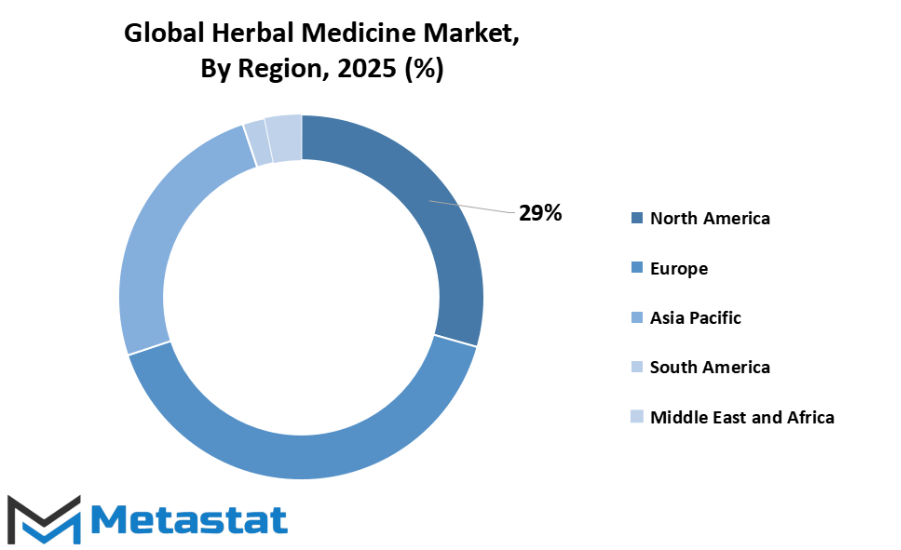
COMPETITIVE PLAYERS
The global herbal medicine market will be influenced by the presence of a number of established players who will keep innovating and grow their range. The likes of Arkopharma, Pierre Fabre (Naturactive), PiLeJe Micronutrition, Herbesan, Santé Verte, and Vitavea will emphasize creating herbal supplements and wellness products that will be able to address a large variety of consumer requirements.Their commitment to clinical support and research will play a key role in improving the efficacy of herbal medicine among healthcare providers and consumers. Such firms will be at the forefront of offering products that are scientifically backed and rooted in natural healing methods.
Global market leaders such as Dr. Willmar Schwabe Group, Bionorica SE, MB-Holding GmbH & Co. KG, Klosterfrau Healthcare Group, Aboca S.P.A., A.Vogel Company, and Max Zeller Söhne AG will solidify their presence across global markets. They will focus on the development of standardized formulations that will be of high quality, and thus herbal products will become popular and widespread. By innovation, partnerships, and eco-friendly sourcing, they will ensure herbal medicine is a sustainable source for future generations and in accessible forms for contemporary living.
Moreover, other household names in Asia as well as in other parts of the world, such as Himalaya Wellness Company, Patanjali Ayurved Ltd., Cultivator Natural Products Pvt. Ltd., Blackmores Ltd., and Nutraceutical International Corporation, will drive the industry forward. Firms like Nature's Way Products LLC, Young Living Essential Oils, Gaia Herbs, Herbal Hills, i-Health Inc., and Ricola AG will entice customers who will make authenticity, natural origin, and environmental sustainability their top concerns. All of these market participants combined will make the global herbal medicine market competitive and dynamic so that there will be a constant flow of innovative products and concepts that will answer evolving global health and well-being trends.
Herbal Medicine Market Key Segments:
By Product Type
- Herbal Supplements
- Herbal Cosmetics
- Herbal Beverages
- Herbal Drugs
- Essential Oils
By Form
- Capsules & Tablets
- Liquid Extracts
- Powder
- Ointments & Creams
- Other
By Source
- Barks
- Leaves
- Roots
- Others
Key Global Herbal Medicine Industry Players
- Arkopharma
- Pierre Fabre (Naturactive)
- PiLeJe Micronutrition
- Herbesan
- Santé Verte
- Vitavea
- Dr. Willmar Schwabe Group
- Bionorica SE
- MB-Holding GmbH & Co. KG
- Klosterfrau Healthcare Group
- Aboca S.P.A.
- A.Vogel Company
- Max Zeller Söhne AG
- Himalaya Wellness Company
- Cultivator Natural Products Pvt. Ltd.
WHAT REPORT PROVIDES
- Full in-depth analysis of the parent Industry
- Important changes in market and its dynamics
- Segmentation details of the market
- Former, on-going, and projected market analysis in terms of volume and value
- Assessment of niche industry developments
- Market share analysis
- Key strategies of major players
- Emerging segments and regional growth potential



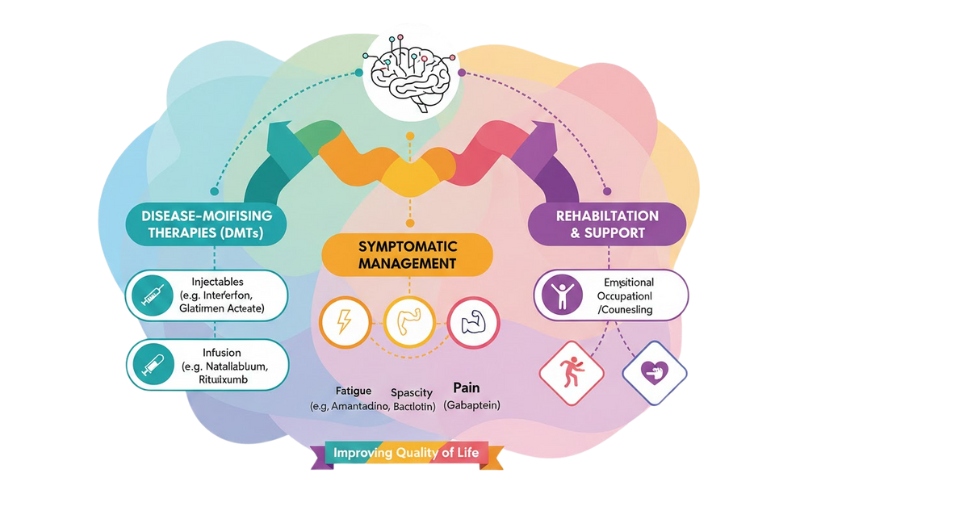
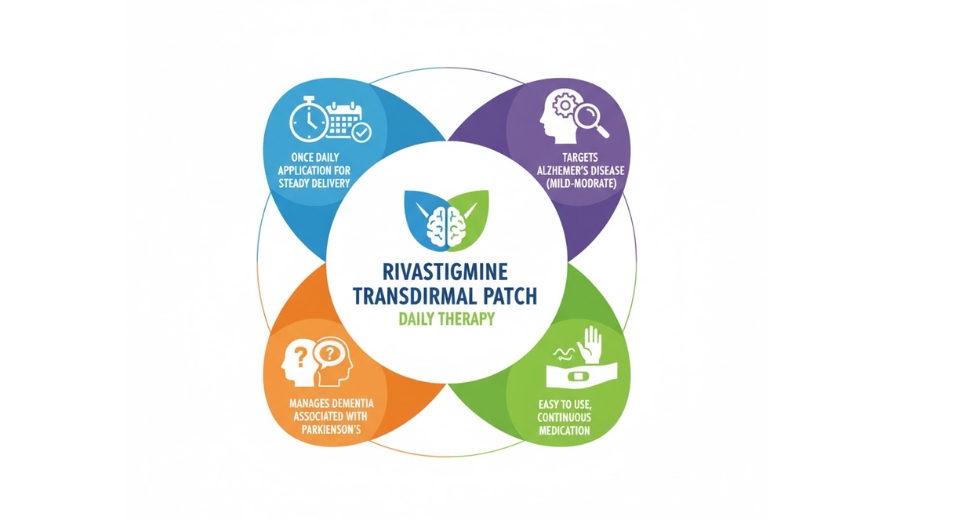
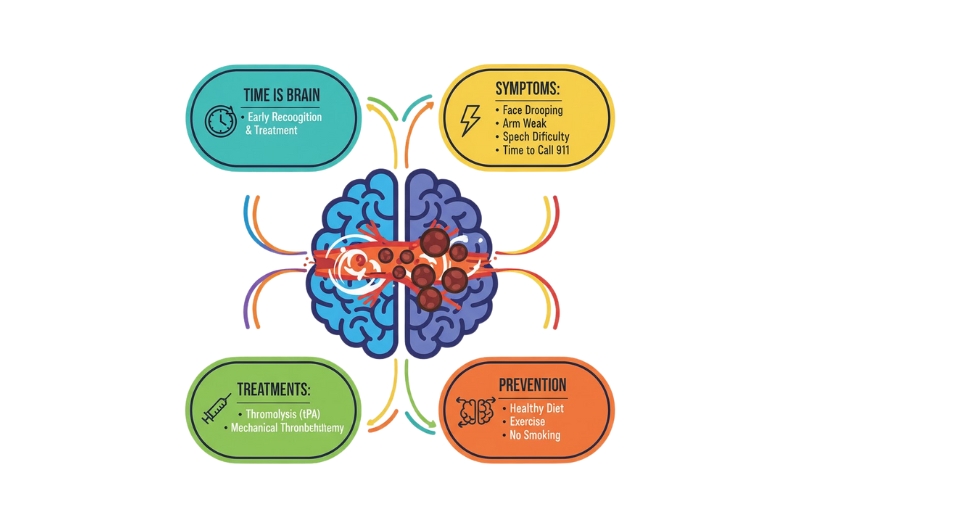
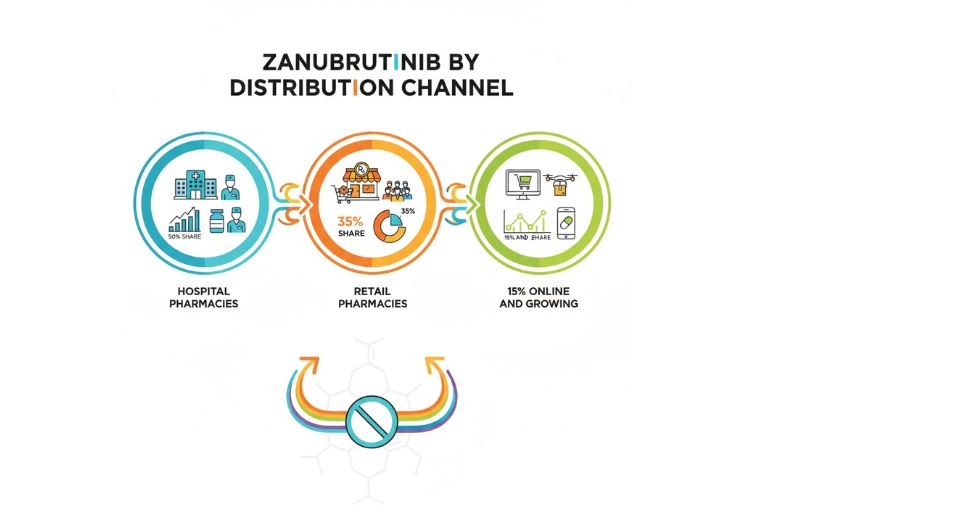

 US: +1 3023308252
US: +1 3023308252






